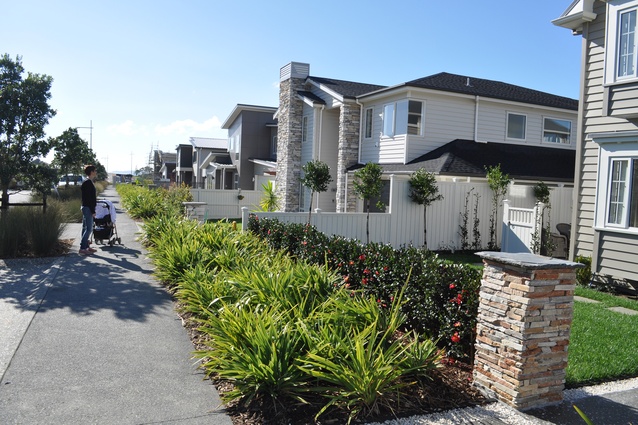Water, water, everywhere
Given the region’s emotional and financial connection to water, water-sensitive design (WSD) has a dedicated hub on the Auckland Design Manual (ADM). GD04 is council’s recently published water-sensitive design guide. Here Sue-Ellen Fenelon from the Auckland Council Stormwater Unit explains two case studies.
Water sensitive design (WSD) is getting nature to do the work for you. We have been trying to work out how to manage our interaction with the natural water cycle for thousands of years. It turns out Mother Nature has had the answers all along.
GD04 is an online tool with case studies, ideas and guidance. The main text is already available, and it soon will be followed online with the various digital components available through the Auckland Design Manual (ADM).
Two ADM case studies featuring WSD are Todd Property Group’s Long Bay development, and Auckland Council’s Barry Curtis Park.
Long Bay – seamless integration of catchment planning and urban design
The primary draw of this Boffa-Miskell designed residential development is its location: adjacent to the Long Bay Regional Park and the Long Bay-Okura Marine Reserve. The need to ensure the protection of the environment from the effects of stormwater run-off was a key to the project’s success. The development crosses two catchments, with high-quality streams in both.
The land use zoning applied to the development is an example of WSD thinking being integrated into the planning process right from the very start. The upper catchments, with the more sensitive stream environments, have lower density development; while higher density development has been allowed in the lower catchment.
With the integration of water sensitive design in the streetscape, the streets have virtually become part of the stormwater treatment systems, with swales and rain gardens treating the run-off from the roads and driveways. For designated garden streets at key points in the catchment, there is a “kit of parts” – a set of key design features which can be arranged in a variety of ways to suit each location and avoid that sense of sterile standardisation while still maintaining a high-performance system.
The use of WSD has served the Long Bay environment well, and is protecting important natural assets. But it has also provided clear evidence that achieving high environmental standards can easily be incorporated as an enhancement to thoughtful neighbourhood design, not a burden.
Barry Curtis Park – connecting an expanding community with their catchment
Adjacent to the large residential development of Flat Bush in the south of Auckland, Barry Curtis Park provided Auckland Council with the opportunity to use water sensitive design to link a growing community with their catchment and environment through recreational spaces and play.
The 94ha site, designed by the Isthmus Group, has 55km of protected natural stream and gully areas, which create a network of green fingers that connect the residential areas of Flat Bush with the Barry Curtis Park. Pathways lead around the park’s border, between key points of interest and along the streams, and serve as convenient pedestrian boulevards and green spaces in which local residents can spend time among native plants and birdlife.
Wide riparian buffer zones of areas of flax, codex, and other native plants provide better water treatment and a more resilient natural environment for fauna. As well as bringing nature closer to the residents, Barry Curtis Park also serves the vital purpose of bringing South Auckland’s communities closer together, with a variety of sporting, play and cultural spaces including picnic areas and an amphitheatre. The park was the venue for Auckland’s annual Pacifica event for the first time in 2015, and since opening has hosted the largest Waitangi Day celebrations in the Auckland region.











